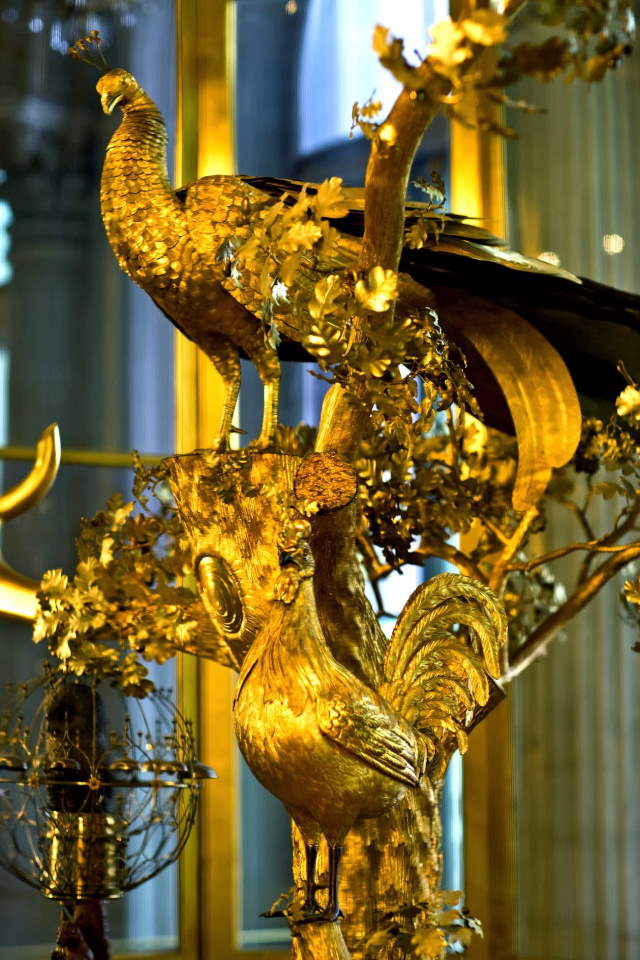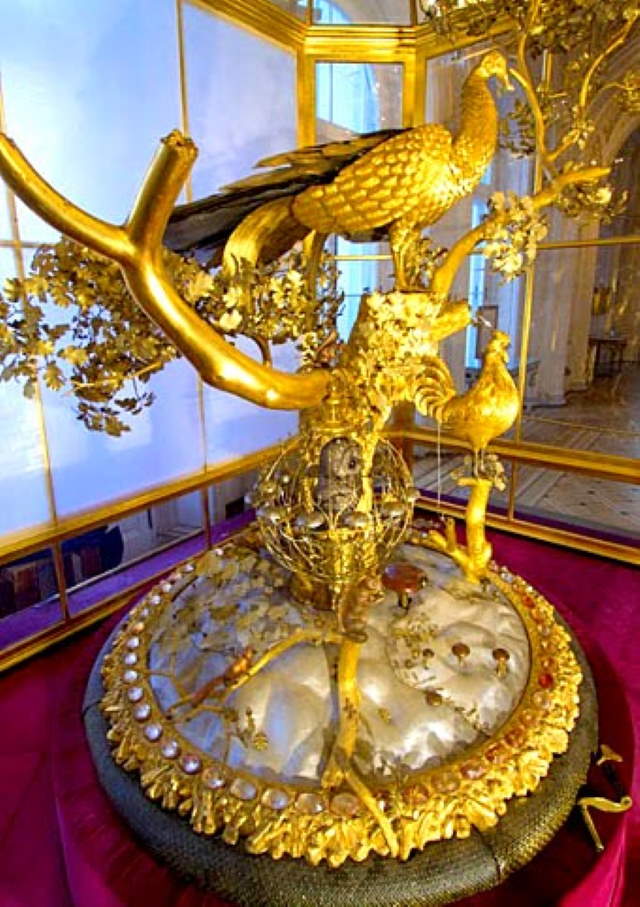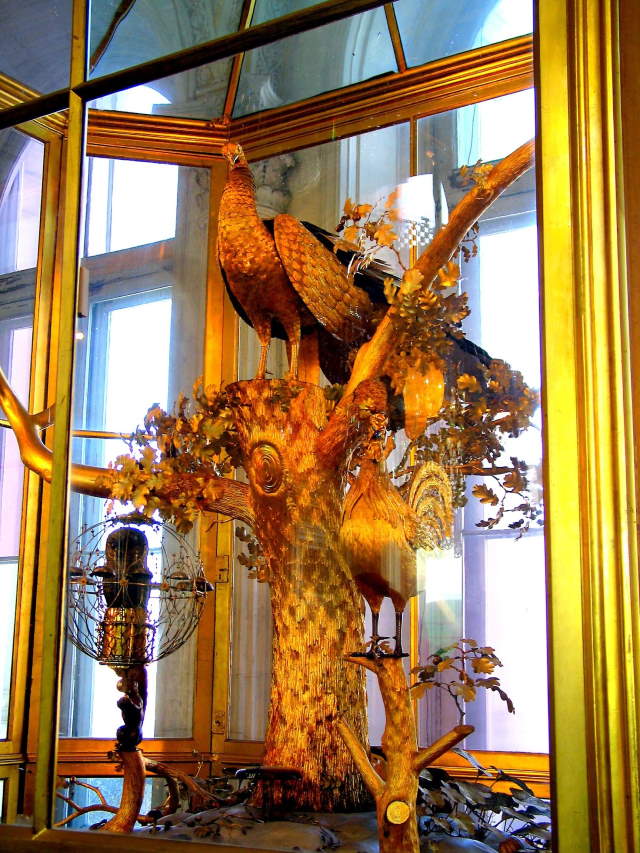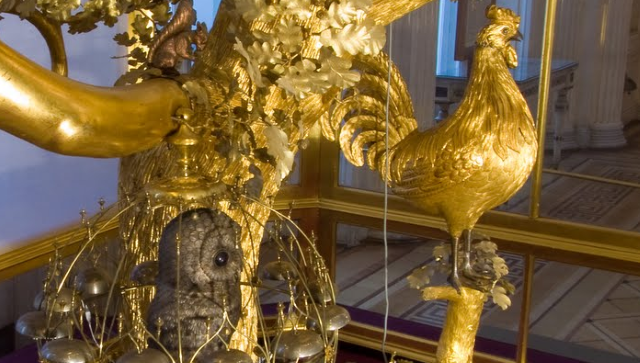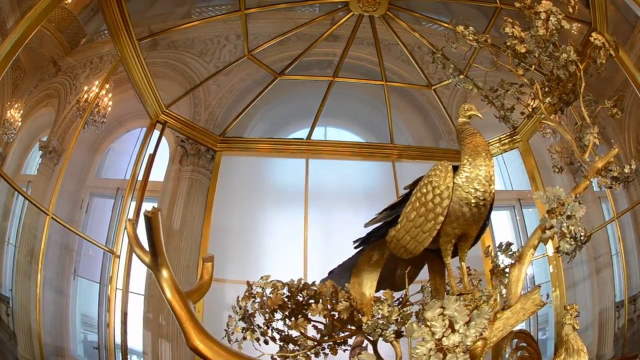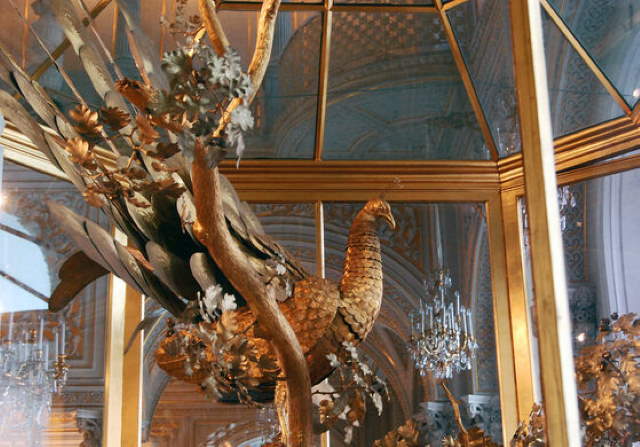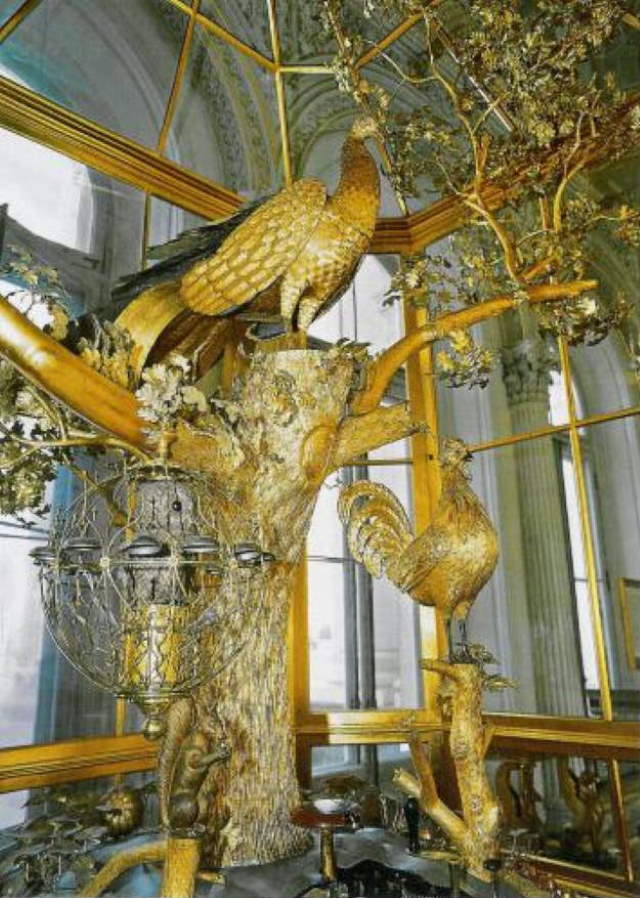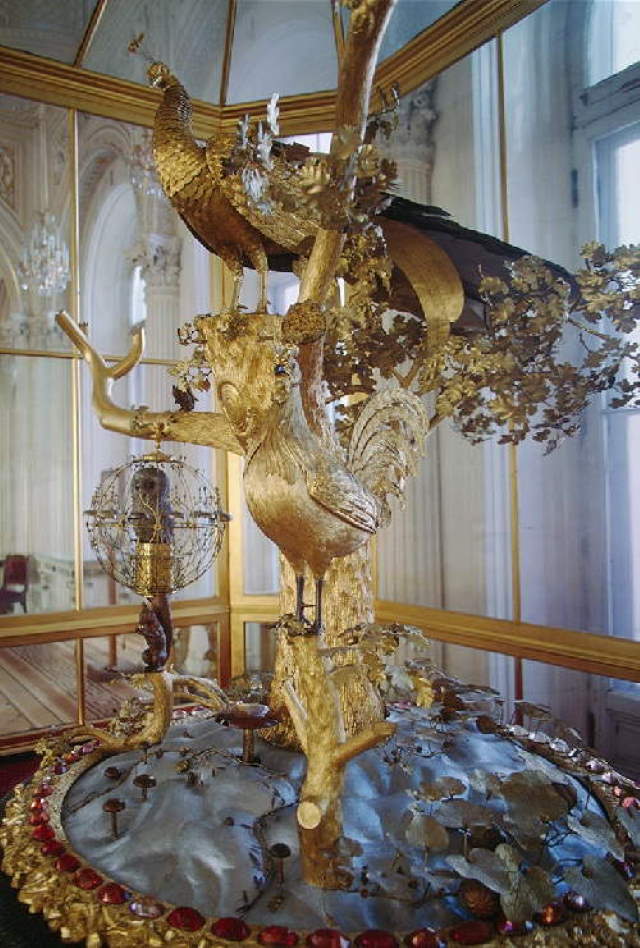SHANGRALA'S
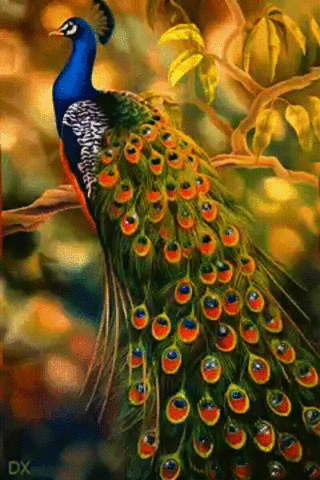
THE
PEACOCK
CLOCK!

|
The Peacock Clock is a large automaton featuring three life-sized mechanical birds.
This amazing clock is a work of art created in the 18th Century by James Cox,
a London goldsmith and jeweler. Through the influence of Grigory Potemkin, it
was acquired by Catherine the Great in 1781. Today it is a prominent exhibit
in the collections of the Hermitage Museum in
Saint Petersburg, Russia.
Here Are Photos Of This Amazing Timepiece. Enjoy! :) 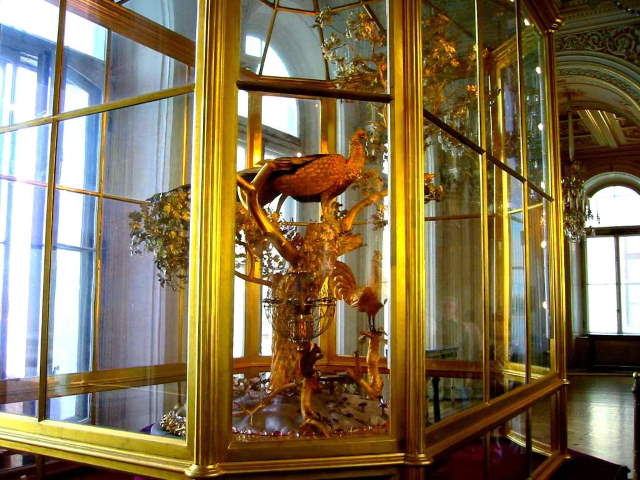
For more than two centuries now the Hermitage has been adorned by a unique exhibit that never fails to evoke the enchanted admiration of visitors - the famous Peacock Clock. 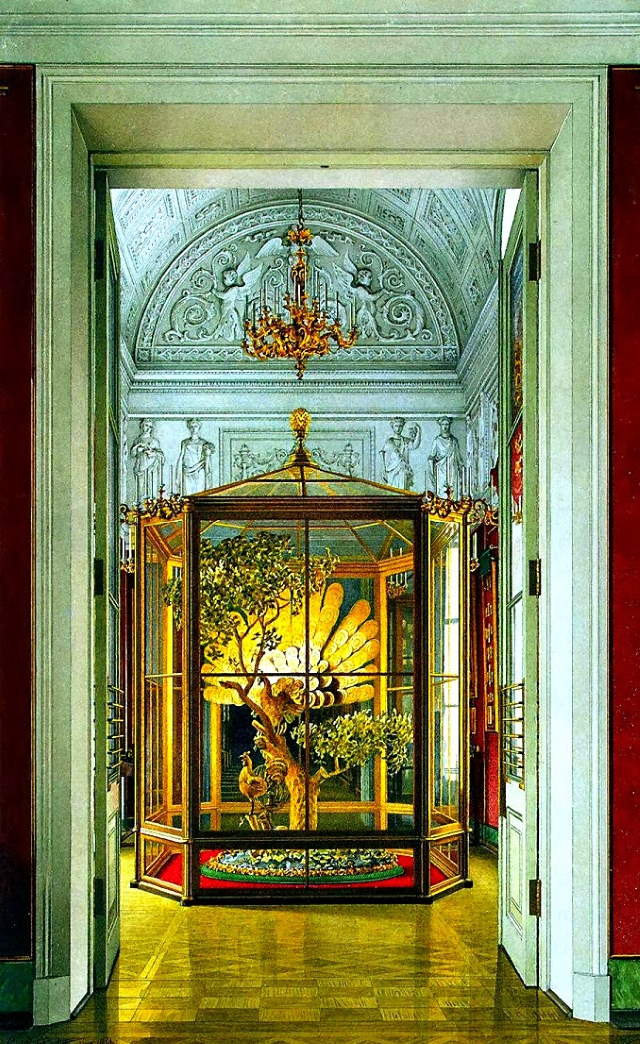
The figures of a peacock, cockerel and owl that form part of this elaborate timepiece automaton are fitted with mechanisms that set them in motion. 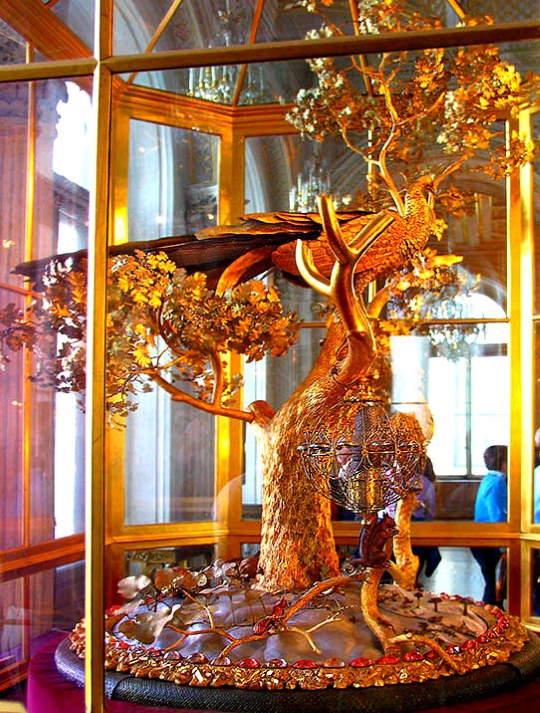
The creation of mechanical birds had long been of interest to inventors: back in the Ancient World figures of 'singing' birds had been used to embellish clepsydras - water clocks. 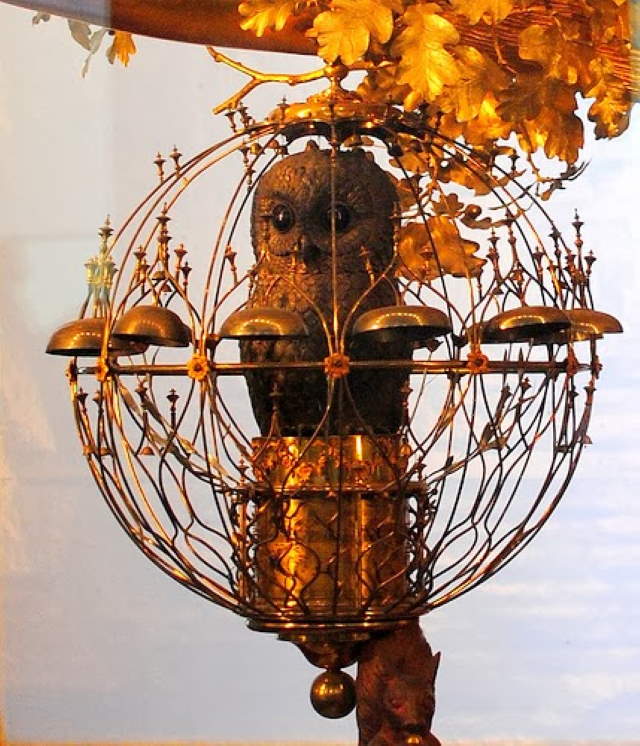
In the 18th century the makers of automata tried to create a system that would enable their birds not only to sing, but also to behave as if alive, and they made them life-size. 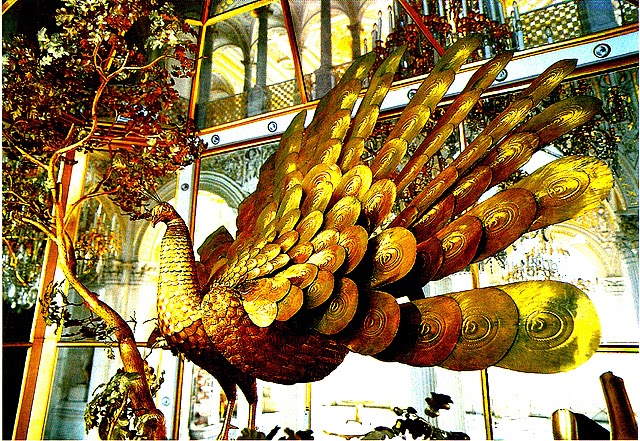
The history of the Hermitage's Peacock Clock begins in 1777, when the Duchess of Kingston visited St Petersburg. Balls were given in the Russian capital in honor of this wealthy and distinguished guest. 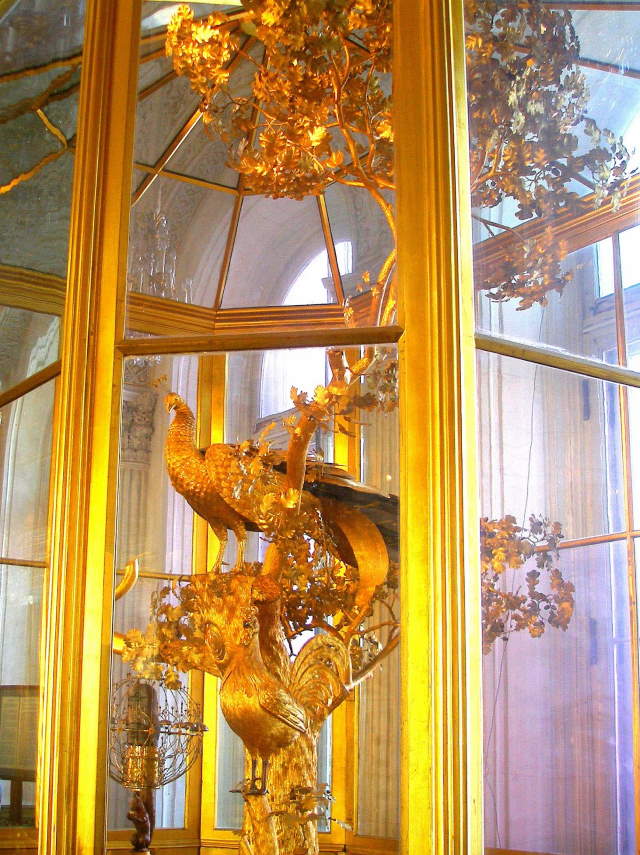
Grigory Potiomkin, who met the Duchess in society, learned of James Cox's magnificent mechanisms. 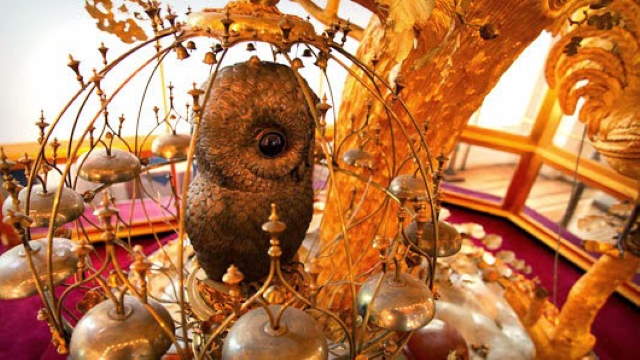
Pandering to Catherine II's passion for collecting, the Prince commissioned the celebrated craftsman to make a monumental automaton with a clock for the Empress's Hermitage. |
Share This Wonder
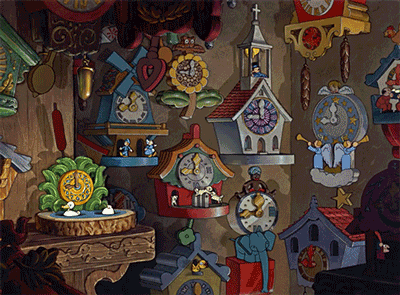
To Delight And Amaze
All Your Friends And Family! :)
SEE ALSO: Montreal Aura Basilica!

^BACK To TOP^
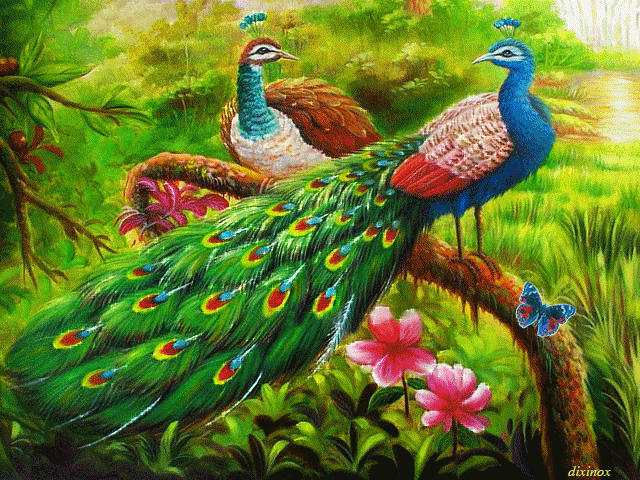
For those of you who Want More FUN - Visit The Shangy Fun List! Variety is the
spice of life! The Shangy Fun List is an ezine packed full of Poems, Inspirational and
Heart Warming Stories. Jokes from G to slightly R, and Anything else that just
might make you SMILE! Join In The Free FUN!! ... :)
Yes! Click Here To GO TO THE ARCHIVES!-
Like This Page?
If you are looking for more, here are some good places to start:

Owl Lovers!-
Extreme Homes!-
God's Paintings 2!-
Birth Of An Island!-
Natural Show-Offs!-
World Of Peacocks!-
Mabel The Chicken!-
Unique Mini Clocks!-
Radical Room Decor!-
Little Known Things!-
Rarely Seen Things 5!-
Gateway Auto Museum!-
Brilliant Women Inventors!-
Egyptian Museum In Cairo!-
Beautiful Russian Churches!-
Metropolitan Museum Of Art!-
World's Largest Monastic Library!-
A-Z Animated GIF Images!-


 -To SHANGRALA-
-To SHANGRALA-
SPECIAL THANKS Goes To LOUISE AUSTIN For Sharing This With Us.
Copyright © 1996 Netscape Communications Corporation. Mozilla is
a trademark of Netscape Communications Corporation.
Note: This is an Unofficial God, Jesus Christ, Family, & Cartoon Fan Site.
© All graphics representing Disney characters are copyrighted by Disney.
Likewise all other graphics & music Copyright © by their own Individual Artists.
I do not own any graphics on this site. If you do, please notify me and I'll give
you proper credit, a link, or remove it immediately according to your wishes.
~*~ Copyright © 1997-2021 Elrhea M. Bigham ~*~
